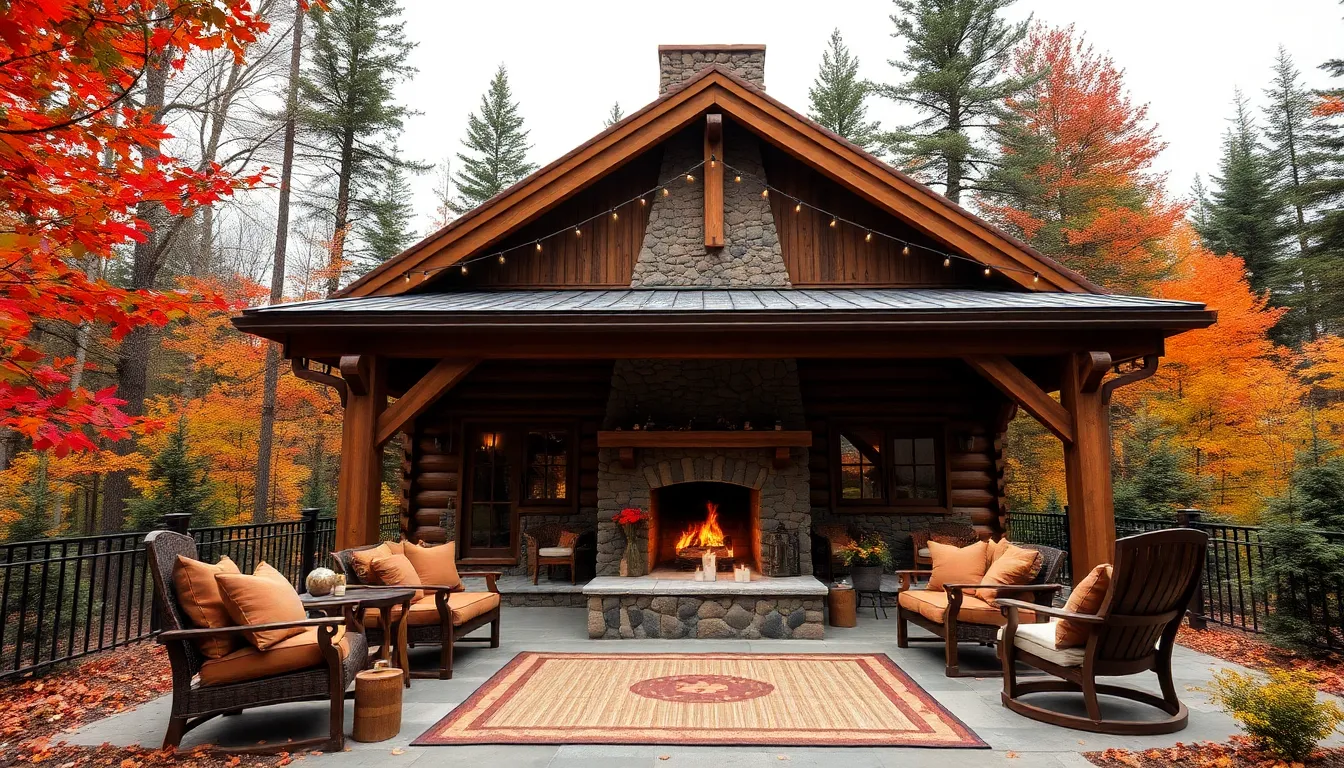Imagine stepping into a cozy retreat nestled amidst the whispering trees, where the crackling of a fireplace invites you to unwind and savor the serenity of nature. Whether you’re new to outdoor living or a seasoned enthusiast, exploring the charm and functionality of cabin-style shelters with fireplaces can transform your backyard into a personal haven. These enchanting spaces blend rustic allure with modern comfort, offering a perfect escape without ever leaving home.
In this article, we’ll guide you through 20 stunning designs that marry the warmth of a roaring fire with the rustic elegance of cabin-inspired shelters. You’ll discover practical tips for incorporating these elements into your outdoor space, ensuring it reflects your style and enhances your outdoor living experience. Join us as we unlock the potential of your backyard, making it a welcoming retreat throughout the seasons.
Charming Rustic Retreats with Fireplaces

Transforming your outdoor space into a charming rustic retreat with a fireplace involves a thoughtful selection of materials and design elements. Begin by choosing durable, natural materials like stone or reclaimed wood for the structure, which blend seamlessly with outdoor environments and offer longevity. For a beginner-friendly approach, consider a simple rectangular shelter with an open front, measuring about 12×16 feet, to provide ample space for furniture and movement without overwhelming your garden.
Incorporate a stone fireplace as the focal point, ensuring it’s built with proper ventilation and safety in mind. Seasoned builders might add advanced touches, such as a chimney with a stone facade or a hearth made from heat-resistant slate. To enhance the cozy ambiance, include elements like wrought iron lanterns or string lights for illumination, and consider using outdoor-rated cushions and throws to withstand the elements. These elements not only add charm but also encourage year-round use of your rustic haven.
Cozy Ambiances in Cabin Shelters
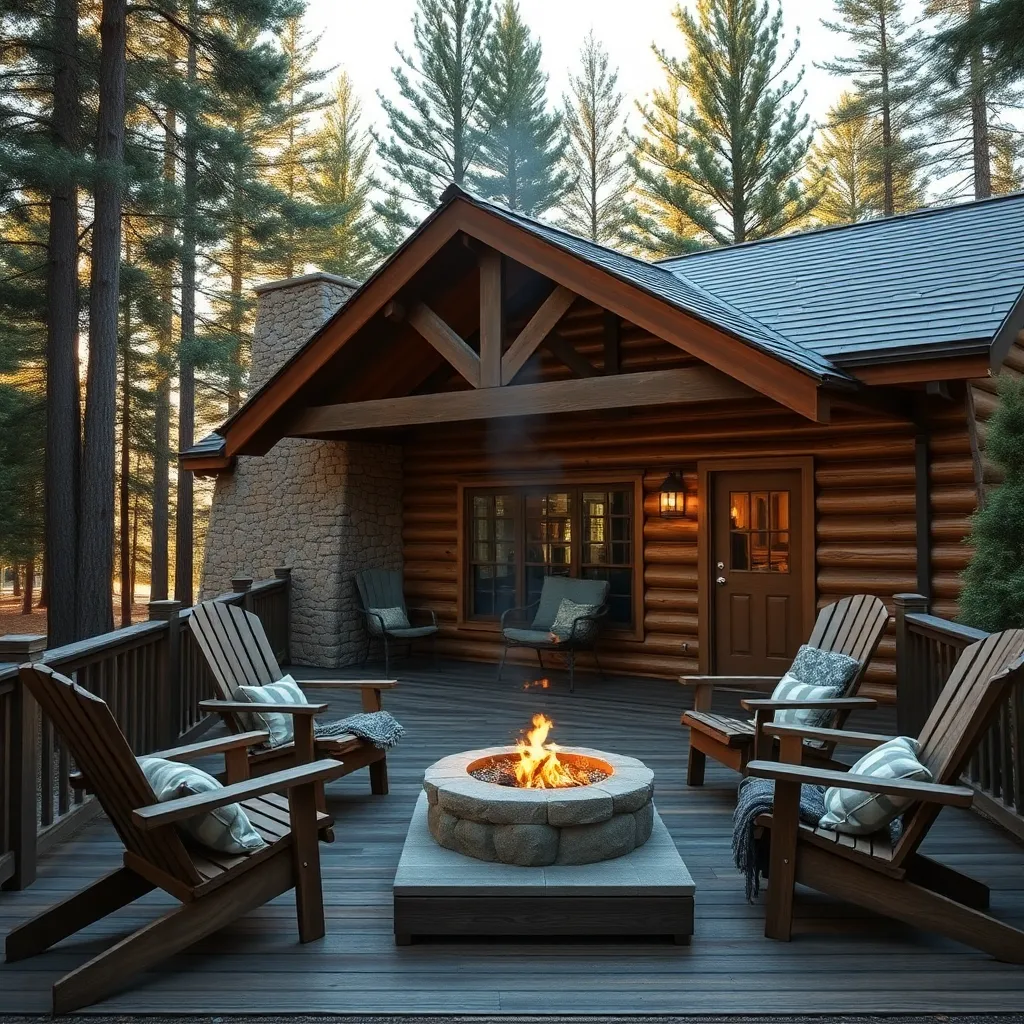
To create a cozy ambiance in your cabin-style shelter, start by focusing on the materials you choose. Opt for natural wood finishes like cedar or pine for walls and ceilings, which not only enhance warmth but also add a rustic charm. Install a stone or brick fireplace as the centerpiece of your shelter, and consider a stainless steel chimney for durability. For flooring, a mix of stone tiles or wooden planks can provide both durability and aesthetic appeal, ensuring a welcoming space even in harsh weather.
Enhance your cabin’s atmosphere with thoughtful design elements and strategic lighting. Incorporate layered lighting with a combination of overhead fixtures and floor lamps to create a warm, inviting glow. Use outdoor-rated, cozy textiles like wool or heavy cotton for cushions and throws to add softness and warmth. For advanced enthusiasts, adding a built-in seating area around the fireplace with weather-resistant upholstery can maximize comfort and space, creating a perfect nook for relaxation.
Fireplace Features for Rustic Cabins

Incorporating a fireplace into your rustic cabin can dramatically enhance its warmth and charm. Opt for a stone or brick fireplace for a truly authentic look; these materials not only offer durability but also retain heat efficiently. Beginners should consider a prefabricated kit, which simplifies installation and ensures safety, while experienced builders might enjoy constructing a custom design. Position the fireplace centrally to maximize heat distribution, and ensure it has a sturdy chimney to vent smoke properly.
For those seeking to elevate their cabin’s ambiance, adding a mantel made of reclaimed wood can create a stunning focal point. This adds character and provides a space to display rustic decor or practical items like firewood and tools. Consider integrating built-in seating around the fireplace to optimize space and comfort. Advanced builders might incorporate a heat-circulating blower system to improve efficiency, ensuring every corner of the cabin remains cozy. By selecting the right materials and features, your fireplace can become the heart of your rustic retreat.
Maximizing Heat Efficiency in Cabins
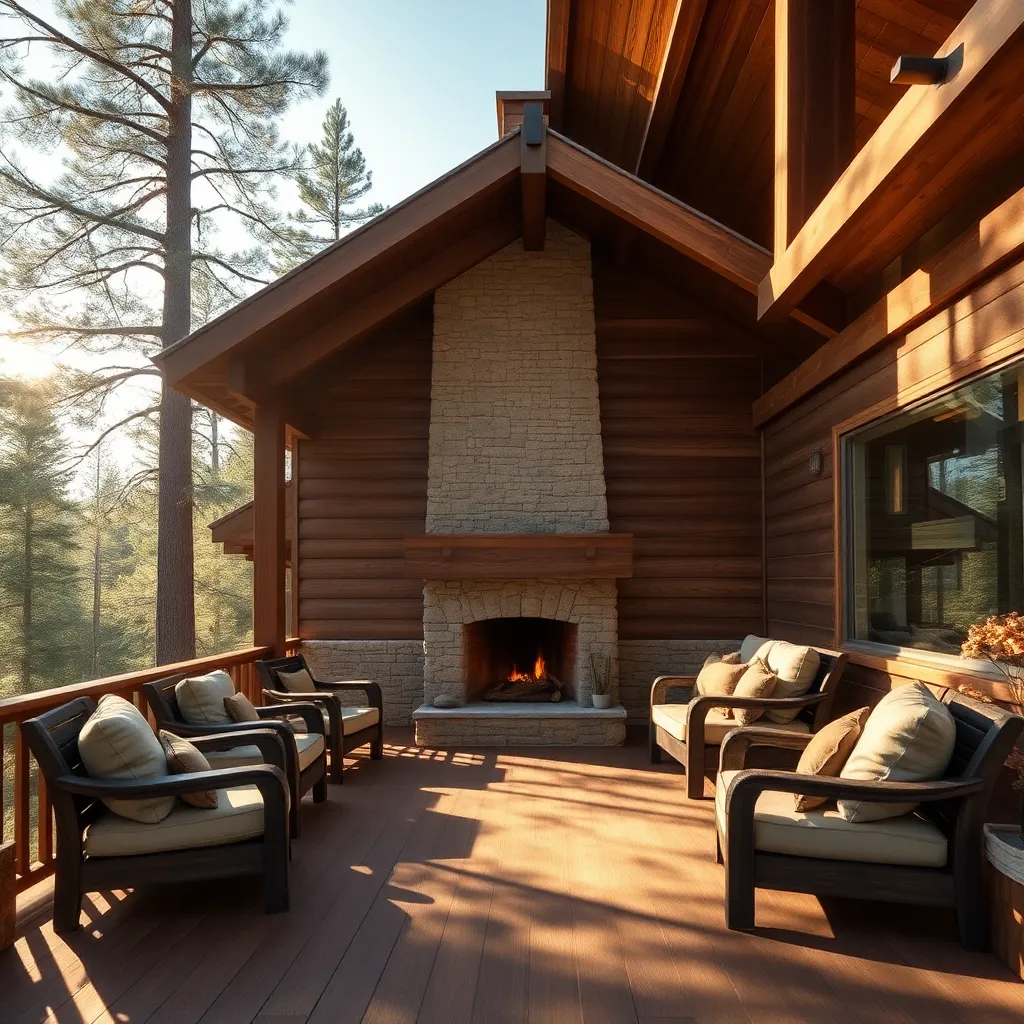
To maximize heat efficiency in cabins, consider using high-quality insulation materials like spray foam or fiberglass. These materials help prevent heat loss, ensuring your cabin stays warm with less energy expenditure. For those with a DIY spirit, installing thermal curtains and weather-stripping around doors and windows is a simple yet effective way to conserve warmth. These steps not only enhance comfort but also make your fireplace more effective by maintaining a stable indoor temperature.
Additionally, incorporating thermal mass elements such as stone or brick around your fireplace can significantly boost heat retention. These materials absorb and slowly release heat, keeping your cabin cozy long after the fire has burned out. For a more advanced approach, consider designing your cabin with strategically placed south-facing windows to capitalize on passive solar heating. This design choice, combined with a well-insulated structure, can dramatically improve your cabin’s heat efficiency and reduce reliance on the fireplace.
Selecting Durable Fireplace Materials

When selecting materials for an outdoor fireplace, focus on options that offer both durability and aesthetic appeal. Natural stone, such as granite or slate, is an excellent choice due to its resistance to weather and heat, ensuring longevity. For a more budget-friendly option, consider using high-quality fire-rated bricks, which provide excellent heat retention and are easy to maintain. To enhance your fireplace’s rustic charm, incorporate decorative elements like a stone mantle or a timber hearth.
Consider the climate in your area before finalizing materials, as this will influence their longevity and maintenance needs. For those in colder climates, opt for materials with higher thermal mass, like concrete or stone, as these retain heat efficiently. If you’re in a wetter region, ensure the materials are sealed to prevent water damage. Advanced tips include integrating a chimney cap to prevent moisture ingress and using a fireproof mortar for added safety and structural integrity. These thoughtful selections not only ensure safety but also enhance the cabin’s cozy atmosphere.
Integrating Fireplaces into Cabin Design

Integrating fireplaces into cabin design can transform your outdoor shelter into a cozy retreat. Start by choosing a suitable location that allows for proper ventilation and safety; consider placing the fireplace on an exterior wall to simplify chimney installation. Use durable materials such as stone or brick, which not only withstand the elements but also add a rustic charm that complements cabin aesthetics. For beginners, a prefabricated fireplace kit can offer a straightforward solution, while more experienced builders might opt for custom designs to match their specific style.
To maximize functionality, think about incorporating a dual-sided fireplace for warmth in both indoor and outdoor spaces. Ensure the hearth is constructed from non-combustible materials like concrete or stone to enhance safety. Consider adding built-in seating around the fireplace to create an inviting gathering spot. Advanced builders might explore incorporating a wood storage solution within the fireplace design, ensuring easy access while maintaining a tidy appearance. Remember, the key is to balance aesthetics with practicality, resulting in a fireplace that enhances your cabin’s charm and usability.
Safety Tips for Cabin Fireplaces

When designing a cabin fireplace, prioritizing safety is crucial to ensure a cozy yet secure environment. Opt for fire-resistant materials like stone, brick, or tile to construct the hearth and surround, reducing the risk of accidental fires. Ensure the chimney is of an appropriate height and made from durable materials like stainless steel or clay flue liners for efficient smoke evacuation and minimized creosote build-up.
Regular maintenance of your fireplace is essential for both performance and safety. Conduct annual inspections to check for cracks, blockages, or other damage in the chimney system. Additionally, install a protective fireplace screen to prevent sparks from escaping onto the cabin floor. For advanced safety, consider incorporating a carbon monoxide detector in the cabin to alert you to any potential hazards, ensuring peace of mind while enjoying the warmth of your fireplace.
Fireplace Maintenance for Cabin Owners
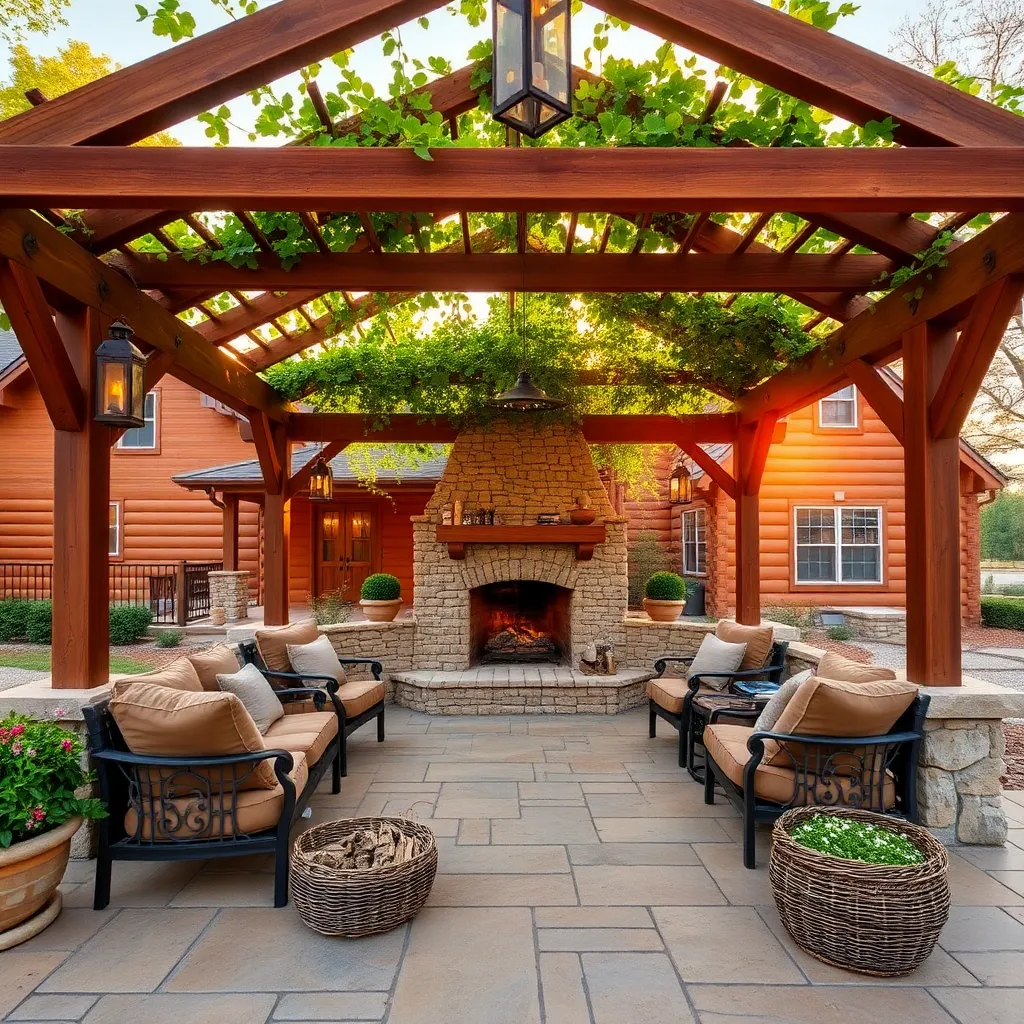
Ensuring your cabin fireplace is well-maintained not only enhances its aesthetic appeal but also guarantees safety and efficiency. Begin by scheduling regular cleaning, ideally once a year, to prevent soot and creosote buildup, which can lead to chimney fires. For beginners, a simple visual inspection of the exterior for cracks or signs of wear can be performed monthly, while experienced owners might consider using a wire chimney brush to clean the flue. For an added touch of style, consider using natural stone or brick materials for the hearth and surround, which are not only durable but also enhance the rustic charm of cabin-style shelters.
Advanced maintenance involves checking the damper and gaskets to ensure they seal properly, as leaks can reduce efficiency and increase fuel costs. Consider installing a chimney cap to prevent debris and critters from entering, which can potentially cause blockages. For those looking to upgrade, a fireplace insert can significantly improve heating efficiency, with options ranging from wood to gas, depending on your preference. Investing in quality materials like stainless steel for the cap and cast iron for inserts can prolong the life of your fireplace, making it a cozy and reliable feature of your cabin for years to come.
Innovative Fireplace Designs for Cabins
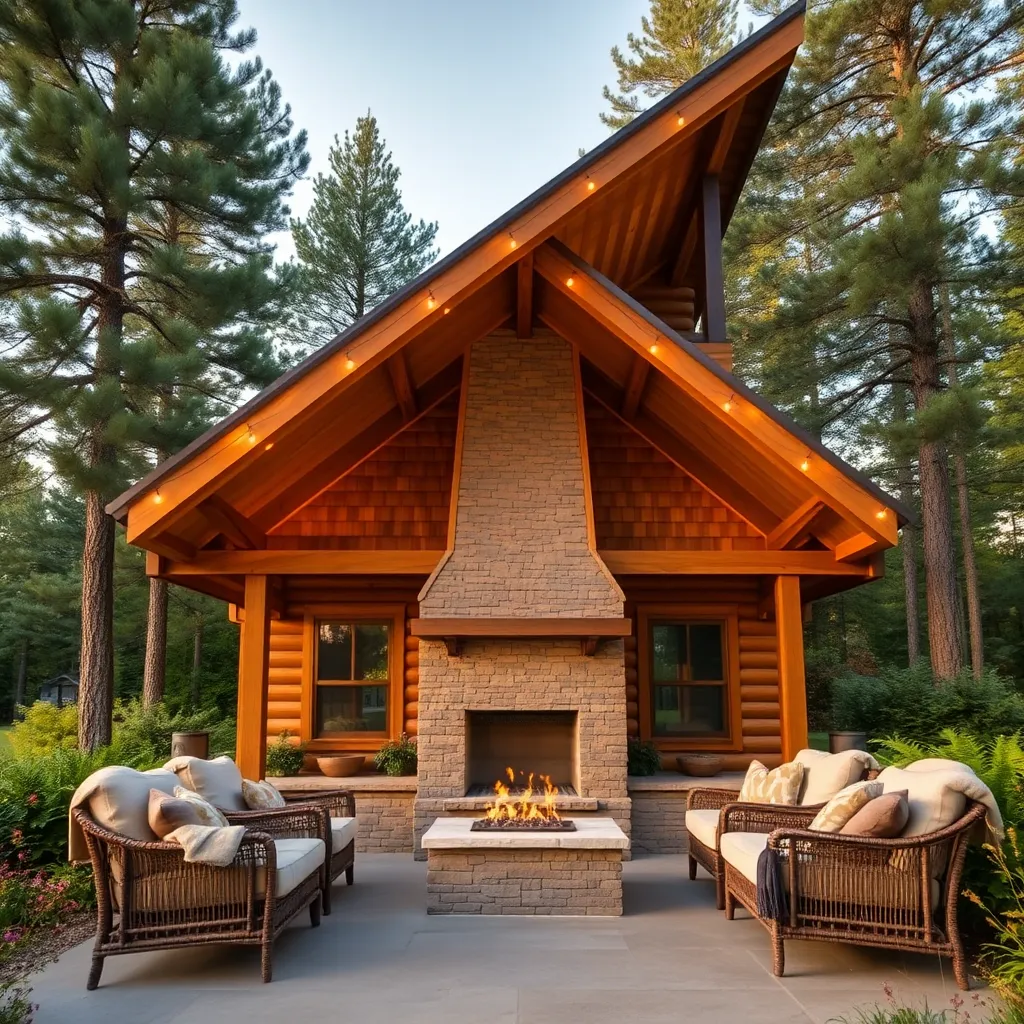
Embracing innovative fireplace designs can transform your cabin into a cozy and inviting retreat. Consider incorporating a dual-sided fireplace that serves both indoor and outdoor spaces, offering warmth and ambiance throughout. For materials, opt for natural stone or brick, which not only enhance rustic charm but also provide durability against the elements. Beginners can start with a simple, pre-fabricated firebox, while more experienced builders might explore custom masonry options to achieve a truly unique design.
For those looking to elevate their outdoor experience, integrating a sunken fireplace pit into your cabin’s deck or patio can create a striking focal point. Ensure you use weather-resistant materials like stainless steel or reinforced concrete to withstand seasonal changes. Pay attention to ventilation by incorporating a chimney or vent system to safely disperse smoke. To enhance comfort, add built-in seating around the fireplace, ensuring it’s constructed of the same durable materials for a cohesive look. Advanced builders can experiment with multi-level designs to add depth and interest to the outdoor space.
Eco-Friendly Fireplace Solutions

For those seeking eco-friendly fireplace solutions in their cabin-style shelters, consider using locally sourced materials such as stone or reclaimed brick for the construction. These materials not only reduce the carbon footprint associated with transporting goods but also blend seamlessly with the natural surroundings, enhancing the rustic charm of your cabin. For a basic setup, ensure the fireplace has a sturdy base and proper insulation to maintain efficiency and safety. Beginners should focus on simple designs that emphasize functionality and easy maintenance.
Advanced enthusiasts can opt for high-efficiency wood-burning stoves, which use less wood and produce minimal smoke, making them an environmentally friendly choice. When designing your outdoor shelter, incorporate a high chimney to effectively disperse smoke and keep the air clean. Consider adding a heat-resistant glass door to the fireplace to improve heat retention while allowing you to enjoy the view of the flames. By integrating these eco-conscious elements, you create a sustainable and inviting space that respects the environment and keeps you cozy.
Creating Warmth with Wood-Burning Stoves
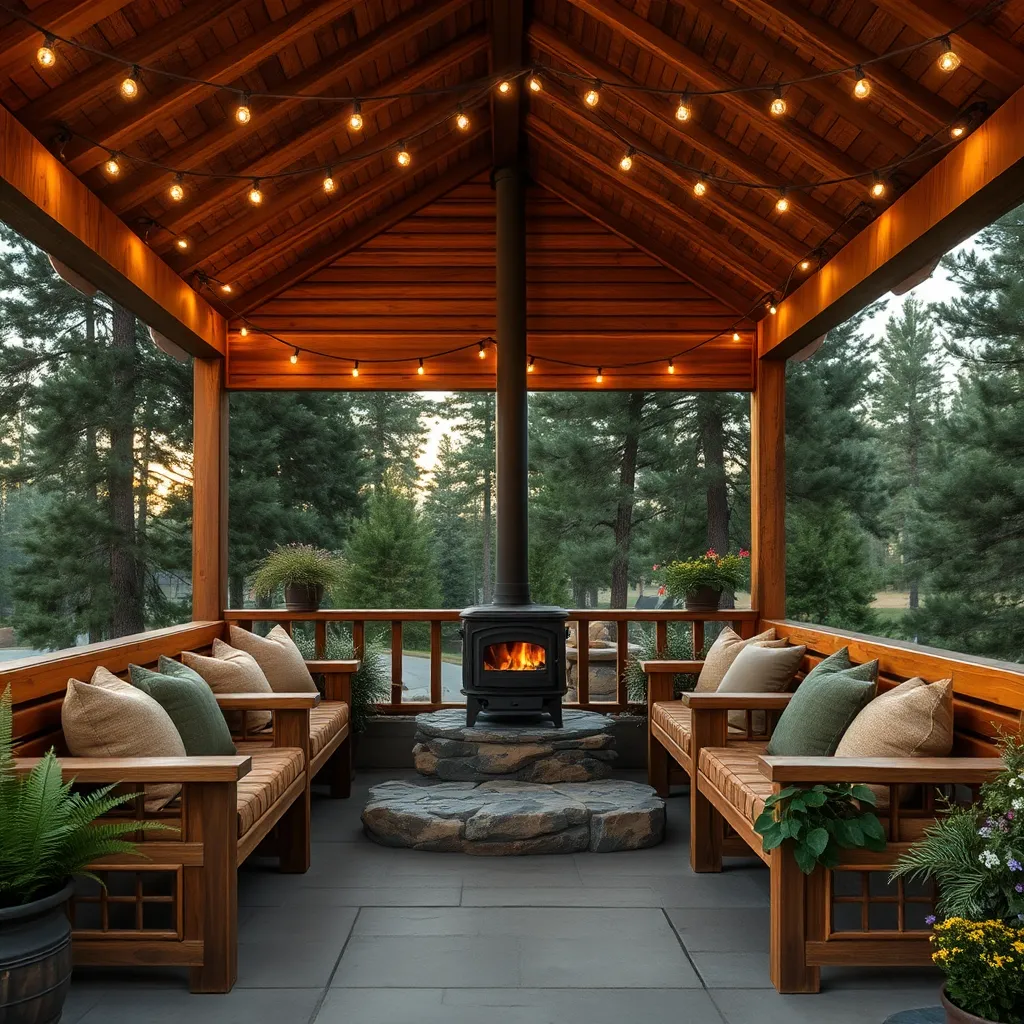
Incorporating a wood-burning stove into your cabin-style shelter is an excellent way to create warmth and ambiance. **Begin by selecting a stove with the right capacity** for your space; for a small to medium-sized cabin, a stove with a heating output of 35,000 BTU is typically sufficient. Opt for models made from cast iron or steel, as these materials are durable and excellent at retaining heat. **Ensure that your stove is installed on a non-combustible base**, such as stone or tile, to enhance safety and stability.
If you’re looking to enhance efficiency and aesthetic appeal, consider adding a **stone or brick wall behind the stove**. This not only acts as a heat shield but also provides thermal mass to radiate warmth long after the fire has gone out. **For a more advanced tip**, install a heat-powered stove fan on top of the stove to circulate warm air throughout the space more effectively. Always ensure that you have appropriate ventilation, such as a chimney or flue, and regularly maintain it to prevent creosote buildup, ensuring both safety and optimal performance.
Gas vs. Wood-Burning Fireplaces
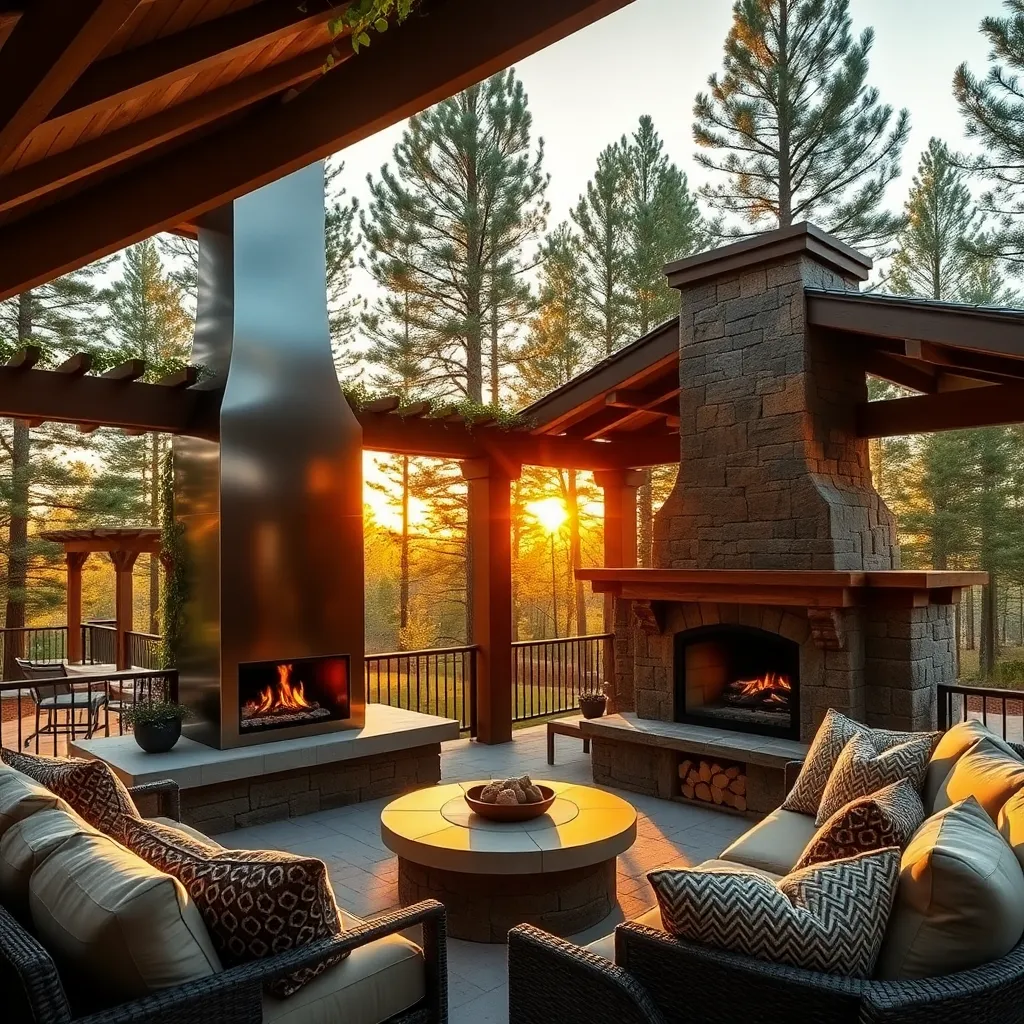
When choosing between gas and wood-burning fireplaces, consider the ease of use and maintenance. Gas fireplaces offer convenience with the push of a button, making them ideal for those who want instant warmth without the hassle of chopping wood. They require less cleaning and are generally more energy-efficient, as they do not lose heat through a chimney. For installation, ensure you have a safe gas line connection and proper venting, using high-quality materials like stainless steel for longevity.
On the other hand, wood-burning fireplaces provide a traditional charm and ambiance that many find irresistible. They can act as a focal point in outdoor shelters, with options like rustic stone or brick surrounds to enhance the cabin-style aesthetic. To maximize efficiency, select a model with a well-designed firebox and consider adding a chimney cap to protect against the elements. For both types, integrate seating areas with weather-resistant materials like teak or cedar, ensuring comfort while enjoying the crackling fire.
Decorating Around Cabin Fireplaces
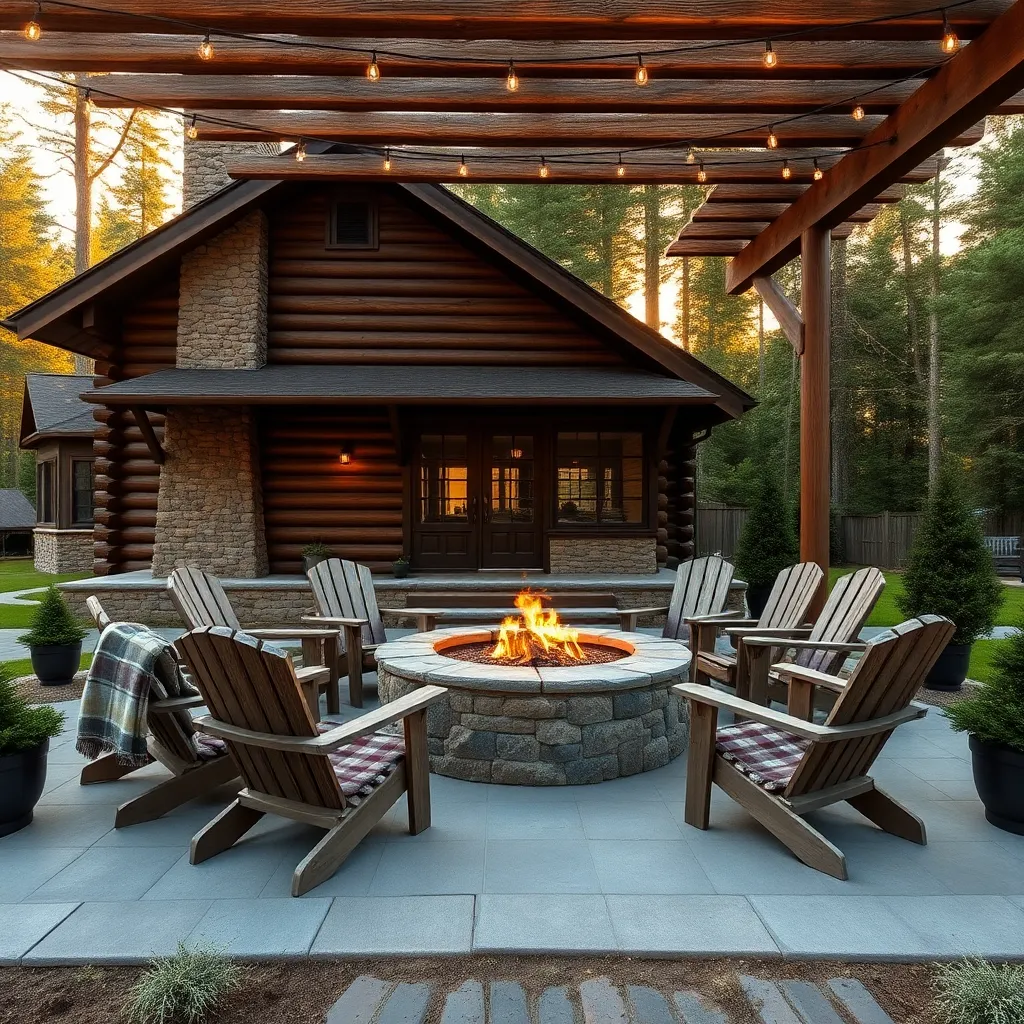
Decorating around cabin fireplaces can create a cozy and inviting outdoor space. Start by incorporating natural materials like stone or reclaimed wood to enhance the rustic charm. You can arrange large, weather-resistant cushions or a set of Adirondack chairs around the fireplace to provide comfortable seating. For a more advanced touch, consider adding a pergola overhead with string lights to create a warm ambiance.
To elevate the design, use outdoor-rated accessories like metal lanterns or wrought-iron accents. Layering textures with outdoor rugs and throw blankets can add warmth and style. Beginners should focus on a simple color palette inspired by the surrounding nature, while seasoned decorators might experiment with bold patterns or eclectic mix-and-match elements. This approach ensures your cabin fireplace area feels both welcoming and stylish, encouraging relaxation and enjoyment.
Fireplace Accessories for Enhanced Comfort
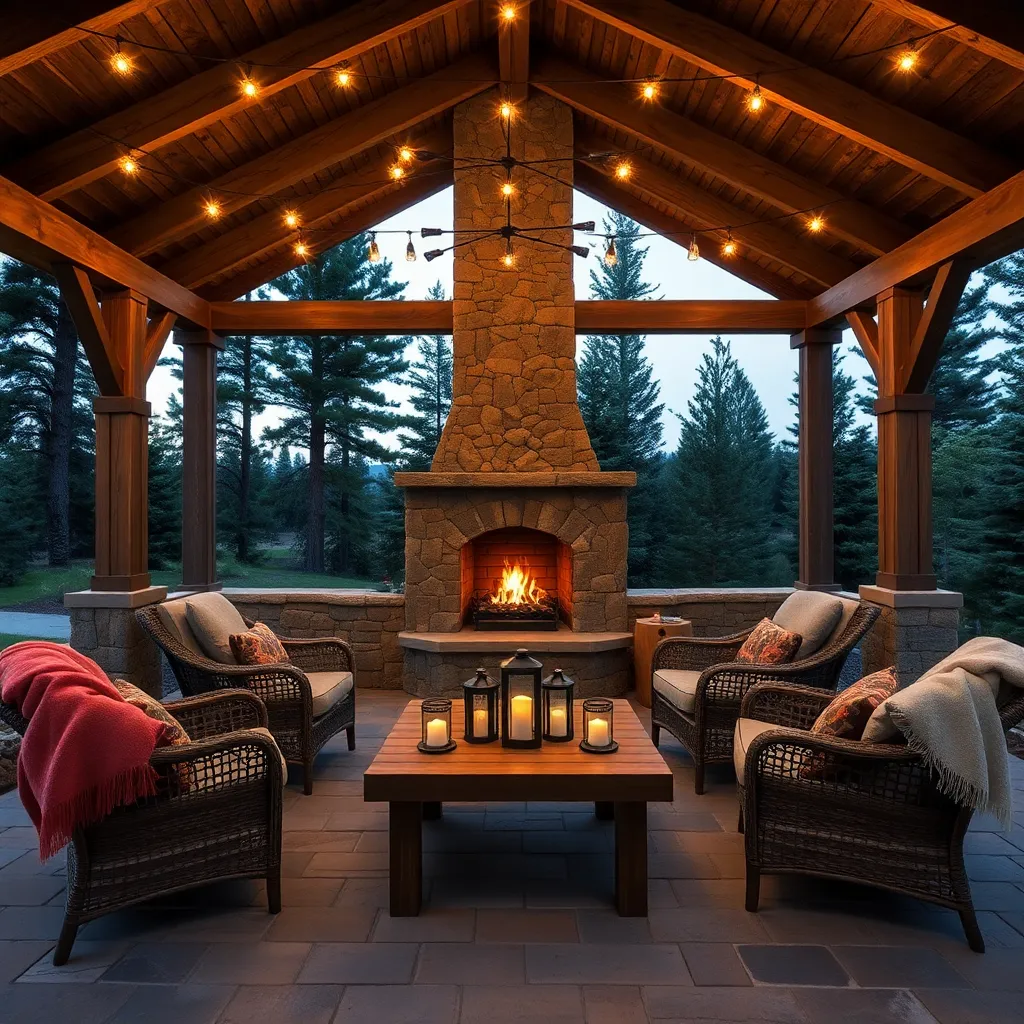
To enhance comfort around your cabin-style fireplace, consider integrating thoughtful accessories that not only improve functionality but also add to the aesthetic appeal. Investing in high-quality firewood racks is a practical way to keep your logs organized and dry, ensuring they are always ready for use. Opt for durable materials like wrought iron or stainless steel, which can withstand outdoor conditions and complement the rustic charm of your cabin. Additionally, adding a firewood holder with a handle can make transporting logs from storage to fireplace more convenient.
For those looking to elevate their outdoor fireplace experience, incorporating a few advanced elements can make a significant difference. Consider installing a fire pit spark screen to enhance safety by preventing embers from escaping, especially if children or pets are around. Available in various sizes, choose a screen that fits snugly over your fire pit, preferably made from weather-resistant materials such as stainless steel mesh. To further personalize your space, include comfortable seating options with weather-resistant cushions and throws, ensuring guests can enjoy the warmth in style and comfort.
Outdoor Fireplaces for Cabin Shelters

For a rustic yet functional outdoor fireplace at your cabin shelter, consider using natural stone or brick as these materials not only blend with the natural surroundings but also provide excellent heat retention. Opt for a simple design with a clear chimney path to ensure smoke is directed away from the seating area. For beginners, starting with a basic stone fire pit and gradually adding features like a cooking grill or seating area can enhance usability without overwhelming your project.
Experienced builders might explore more advanced designs, such as incorporating a stone hearth or a built-in wood storage nook for convenience. Ensure the fireplace is positioned strategically—ideally on the edge of your shelter where it can act as both a focal point and a heat source. Always use fire-rated mortar to withstand the high temperatures and consider adding a protective cap on the chimney to guard against the elements. With careful planning and material selection, your outdoor fireplace can become a cherished centerpiece for gatherings and relaxation.
Seasonal Fireplace Use and Care

When it comes to using your cabin-style fireplace seasonally, it’s crucial to begin with a thorough inspection. Check for any buildup of soot or creosote, which can be a fire hazard, and clean the chimney before the colder months set in. Opt for durable materials such as stone or brick, which not only withstand the elements but also provide excellent heat retention. For those new to fireplace maintenance, consider hiring a professional to ensure everything is safe and efficient.
Designing your outdoor fireplace to transition seamlessly between seasons can enhance both style and function. Consider incorporating a removable cover to protect the fireplace when not in use, extending its lifespan. For advanced users, installing a retractable awning can help shield against rain or snow, allowing for more frequent use. Always ensure the surrounding area is clear of flammable materials and maintain a minimum clearance of three feet around the fireplace for safety. By following these tips, you can enjoy a warm and welcoming outdoor space year-round.
Ventilation Considerations for Cabin Fireplaces

Ensuring proper ventilation for your cabin’s fireplace is crucial to maintaining both safety and comfort. Begin by incorporating adequate air inlets near the fireplace; these should be positioned at least 12 inches above the floor to effectively draw in fresh air. Consider using materials like stainless steel vent covers for durability and resistance to the elements. For those designing their cabin from scratch, integrating a chimney vent with a cap can prevent downdrafts and keep out debris, offering a more efficient airflow system.
For more advanced setups, dual-flue systems can be a game-changer, particularly for larger cabins or those with multiple fireplaces. These systems allow for better control over smoke and heat distribution, enhancing the overall efficiency of your heating. Additionally, using insulated chimney liners will not only improve draft but also increase the longevity of your chimney by reducing condensation. When planning your ventilation, always adhere to local building codes to ensure safety and compliance. These steps will not only enhance your fireplace’s performance but also contribute to a cozier and safer cabin environment.
Historical Fireplace Designs in Cabins
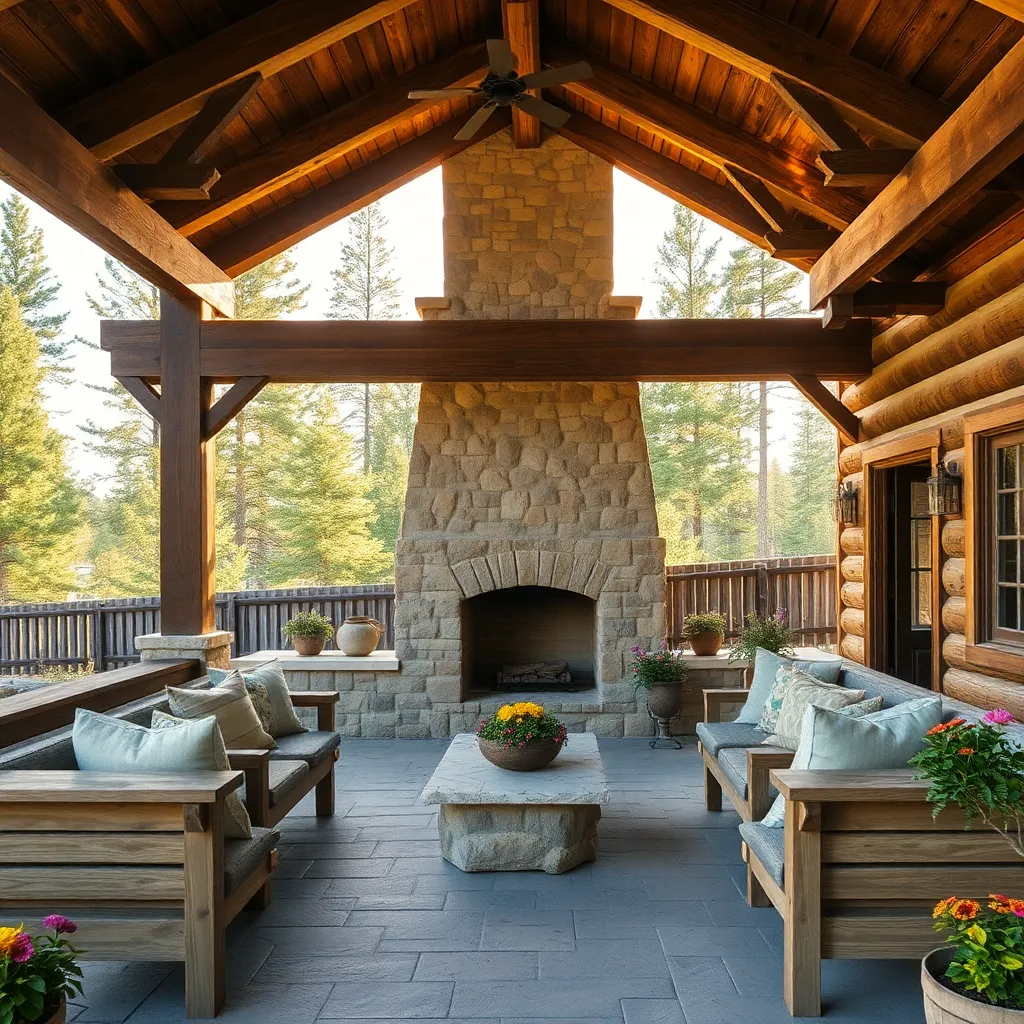
Incorporating historical fireplace designs in cabin-style shelters not only adds charm but also enhances functionality. One classic option is the stone hearth, which provides excellent heat retention and a rustic aesthetic. To construct this, consider using locally sourced stones or bricks to blend naturally with the surroundings. For beginners, a simple design with a straight chimney is a good starting point, while experienced builders might explore intricate patterns or herringbone layouts for added visual interest.
For a more vintage appeal, consider a timber-framed fireplace, which integrates seamlessly with wooden cabin elements. Opt for hardwoods like oak or hickory for durability, and ensure the mantle is deep enough to serve as a display area. Beginners should use a simple beam as a mantle, while advanced builders can experiment with carved designs or reclaimed wood for a more authentic feel.
- Ensure proper spacing—at least 12 inches from combustible materials to prevent fire hazards.
- Consider installing a metal fireback to protect the back wall and improve heat reflection.
Budget-Friendly Fireplace Installations
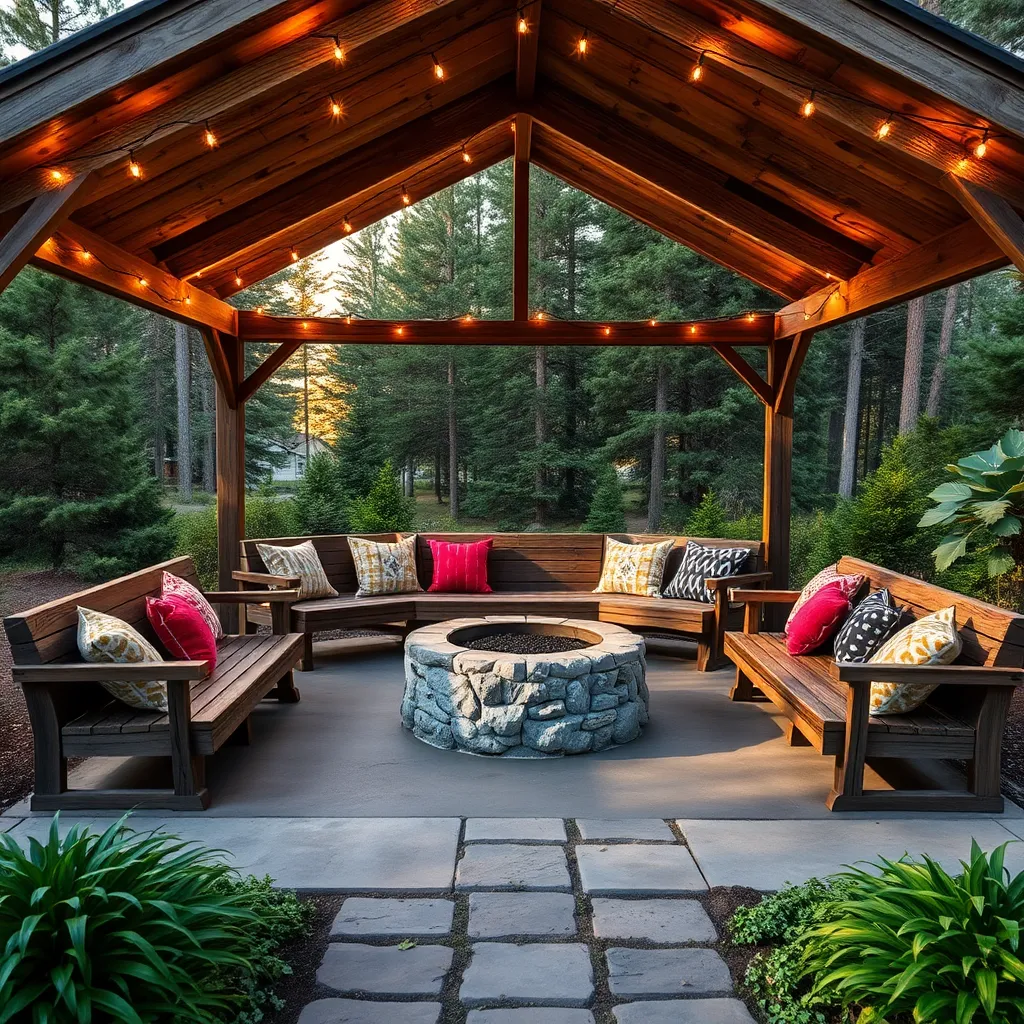
Creating a budget-friendly fireplace for your cabin-style shelter doesn’t mean you need to sacrifice style or functionality. Consider using recycled bricks or stones for a rustic look that complements the cabin aesthetic. These materials are often available at a lower cost and add a unique charm to your outdoor space. For a more modern approach, concrete blocks can be stacked to form a simple yet effective fireplace, which can be enhanced with a coat of heat-resistant paint to match your décor.
For those with some DIY skills, building a fireplace can be a rewarding project. Begin by selecting a location that is both safe and accessible, ensuring the fireplace is positioned away from any flammable structures or materials. Utilize steel fire rings as a durable and cost-effective base for your fireplace, providing a sturdy foundation that can withstand high temperatures.
- Ensure the fireplace dimensions are appropriate for your space, usually around 36 inches in diameter for a traditional fire pit design.
- For added safety, surround the fireplace with a small seating wall using concrete or stone blocks, which can double as additional seating.
By incorporating these elements, you can enjoy cozy fireside evenings without breaking the bank.
Choosing the Right Fireplace Style

When selecting the perfect fireplace style for your cabin-style shelter, consider both aesthetics and functionality. Opt for a **stone or brick fireplace** to enhance the rustic charm, as these materials are durable and blend seamlessly with natural surroundings. For beginners, a **prefabricated metal fireplace** can be a practical choice due to its ease of installation and maintenance. Focus on the location within your shelter to maximize warmth and ambiance—ideally, the fireplace should be a focal point visible from multiple areas.
Advanced builders might explore custom masonry options, allowing for unique designs that include features like **built-in wood storage** or seating ledges. Ensure you choose a **weather-resistant finish** if your fireplace will be exposed to the elements. Consider the size of your outdoor area: a smaller, compact fireplace can create intimacy, while a larger design serves as a grand centerpiece. By thoughtfully choosing your fireplace style, you can create a cozy retreat that is both practical and visually stunning.
Conclusion: Creating Beautiful Outdoor Spaces
In exploring the ’20 Cabin-Style Shelters with Fireplaces,’ we’ve journeyed through a rich tapestry of relationship concepts, each cabin symbolizing a unique element of connection. From nurturing communication and fostering trust to prioritizing quality time and embracing vulnerability, each element serves as a cornerstone for building and maintaining a thriving relationship. We’ve also delved into the importance of shared adventures, emotional support, and creating a safe, warm space—much like the cozy haven of a cabin with a crackling fireplace.
As an immediate next step, choose one concept that resonates with you and your partner. Dedicate time this week to discuss it, setting intentions on how to integrate it into your relationship. This proactive approach will not only enrich your bond but also rekindle your partnership’s warmth.
Remember, relationships flourish with continuous effort and care. Bookmark this article to revisit these concepts and keep your relationship toolkit robust. As you move forward, envision a future of shared joy and profound connection, knowing that the seeds you plant today will blossom into lasting relationship success. Your journey toward a stronger, more fulfilling partnership starts now—take that first step with confidence and hope.

